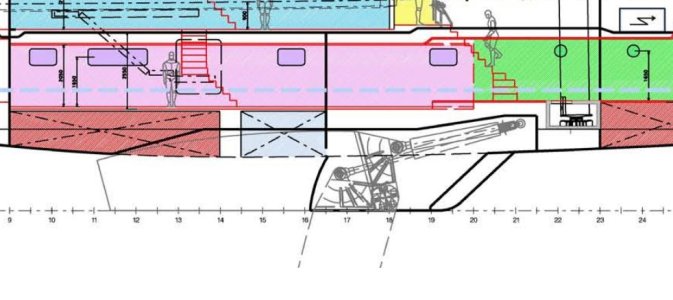Time Out
Well-Known Member
I think the key turning point will be when / if they get the last known recorded wind speed from the instruments.
With all due respect what would a RN warship commander know about yacht stability? Most of my RN captains didn't know what day it was most of the time.[Name withheld] a former Royal Navy commander and warship captain, said the idea that the mast would make the ship unstable was “just incorrect”. He said: “That mast is designed to have a massive sail hanging off it. So on its own with no sail, that’s not what has caused the boat to go over.”
Keel was up
Owner and daughter bodies recovered and two more found
Very sad.
I am not sure about all the issue with the keel up theories. Generally with a keel up even a large boat will "skid" across the water rather than "grab hold" when the keel is fully down.
I know how they work in 70’ to 105’ yachts. I’ve seen 3 in action. They are all two button affairs with dedicated pumps and electronic control gear.Oh yes I know, like I say I know a chief engineer on a very similar boat. However I'd assume that they'd need a lot more oomph than the domestic generator to raise or lower the keel.
I just can't imagine that there was any perceived risk in leaving the keel up at anchor after exiting the port, especially if planning to re-enter in the morning, and I can fully understand a decision to leave it up vs going through the procedure to lower it. It certainly will not be as simple as pushing a button marked "lower keel".
From what I can find from the "tinternet" if that's anything reliably to go by, it looks like it is a centreboard design with a pivoting centreplate, rather than a ballasted keel which retracts almost vertically inside the hull.
View attachment 181857
From what I can find from the "tinternet" if that's anything reliably to go by, it looks like it is a centreboard design with a pivoting centreplate, rather than a ballasted keel which retracts almost vertically inside the hull.
View attachment 181857

It had better be a big one. 500 tons to lift when full of air is an extraordinary crane. Full of water, several times that.A few very big inflatable bags, my bet will be on a floating crane.
Very sad.
I am not sure about all the issue with the keel up theories. Generally with a keel up even a large boat will "skid" across the water rather than "grab hold" when the keel is fully down.
Whilst this article may sound crackpot at first, it does back up your theory. I'm not remotely saying it's true, just commenting on your post.And if the turbulence aerated the water and reduced its density the boat would float lower to displace its weight in (aerated) water.
Looks that way. This is from the ketch version of Perini's Ron Holland designed 56M series:
View attachment 181860
Whilst this article may sound crackpot at first, it does back up your theory. I'm not remotely saying it's true, just commenting on your post.
Dutch salvage companies have lifted far bigger than that.It had better be a big one. 500 tons to lift when full of air is an extraordinary crane. Full of water, several times that.
To bring it to the surface it weighs less because you have to deduct the displaced water weight. (1 cubic mtr of concrete is about 2.4 tons, but submerged it's about 1.4 tons)It had better be a big one. 500 tons to lift when full of air is an extraordinary crane. Full of water, several times that.